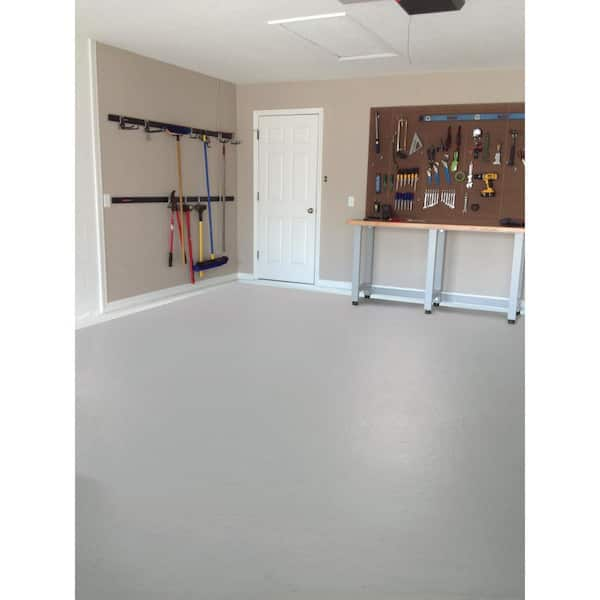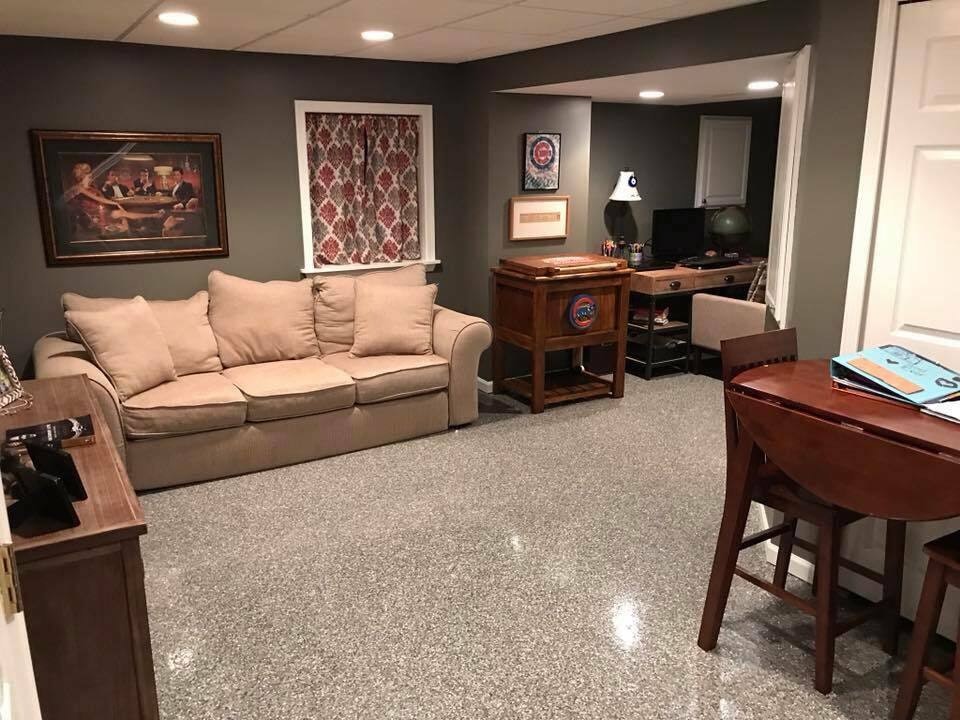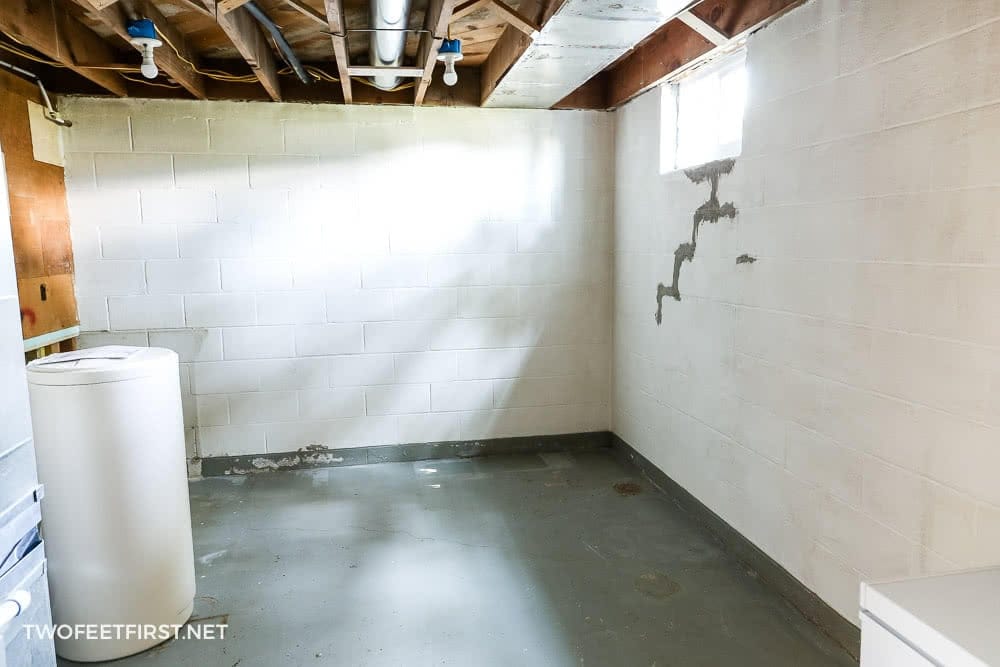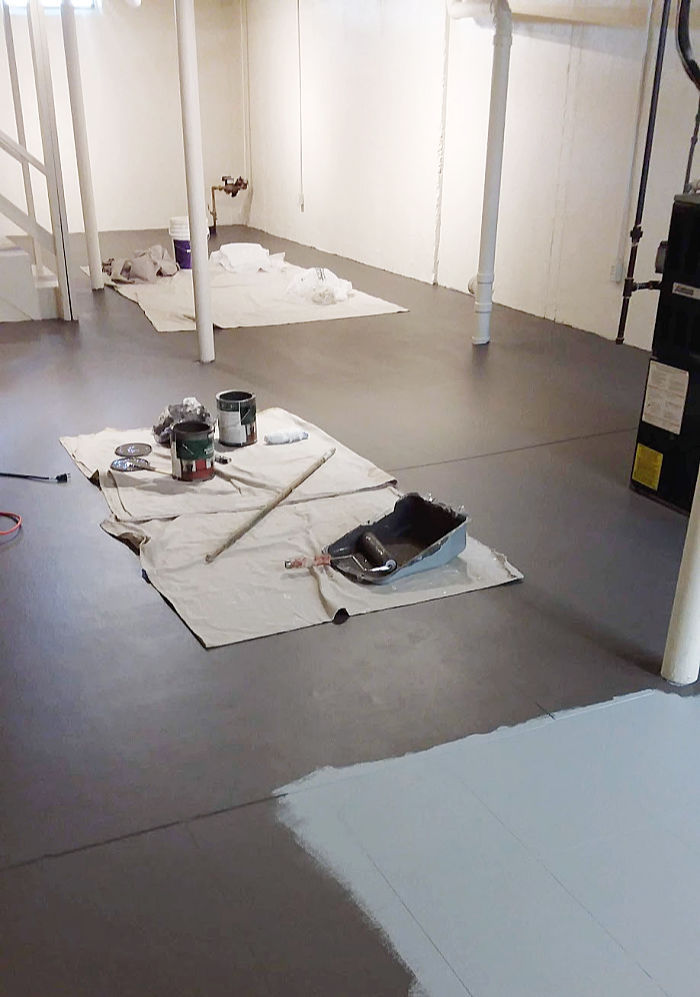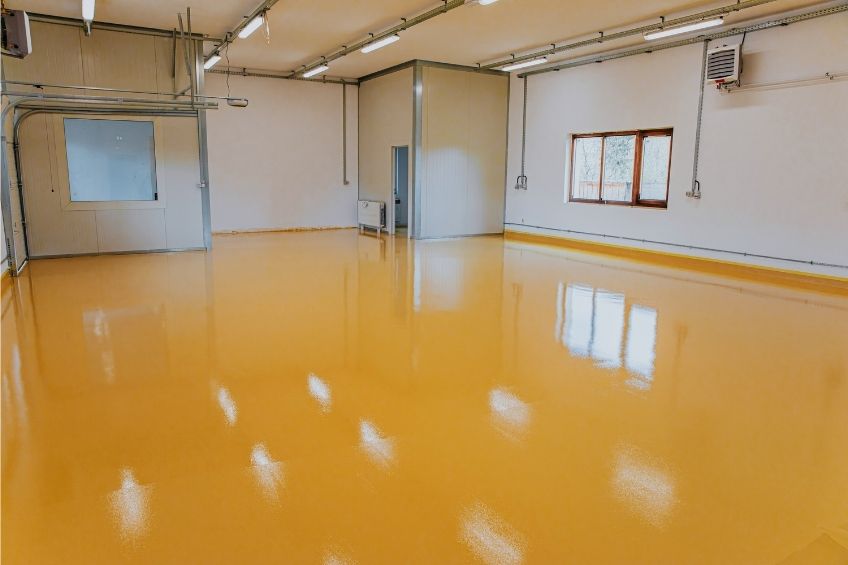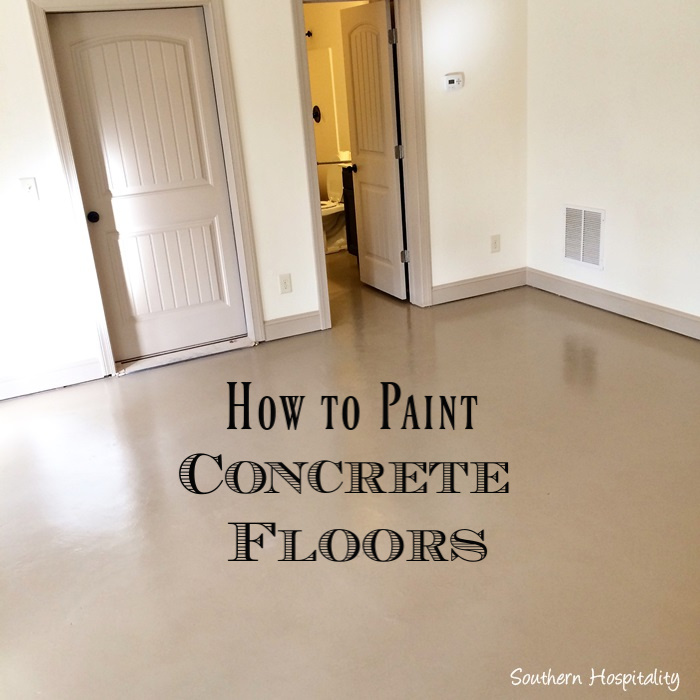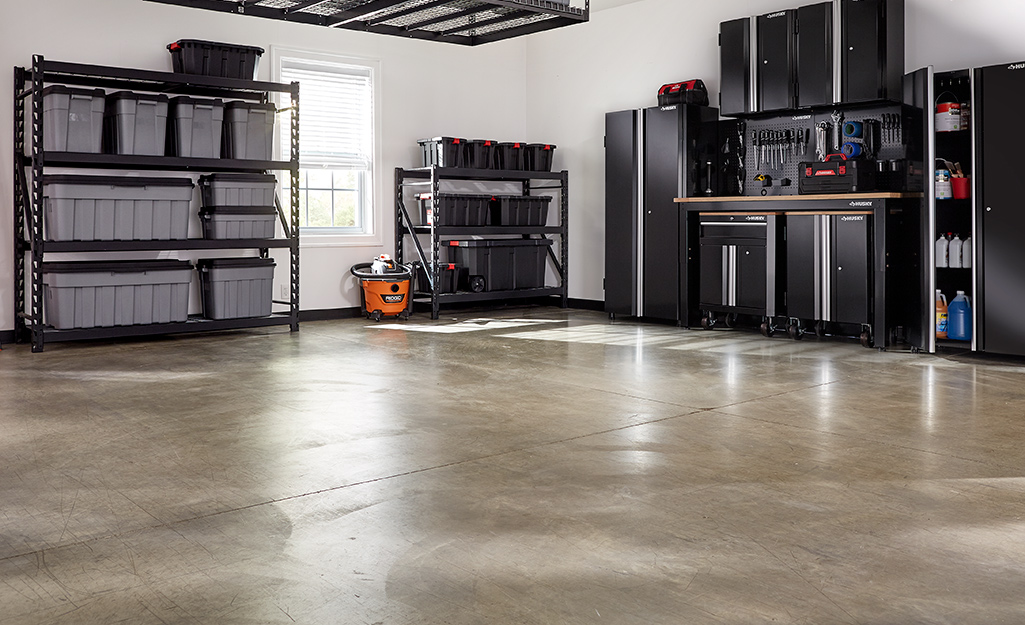Assessing Basement Conditions
Properly evaluating the current state of your basement floor is crucial before painting it. Factors like moisture level, contaminants, necessary repairs, and more must be addressed to ensure the success of the basement floor paint job.
- Use a concrete moisture meter to test moisture vapor emission levels across the floor. High moisture readings above 4 or 5 lbs per 1,000 sq ft mean extra dehumidification or sealing is required before painting.
- Inspect for any existing paints or coatings already on the concrete. Prior coatings must be completely removed before repainting to guarantee proper adhesion. Chemical strippers or grinders remove old paint.
- Look for oil and grease stains and use a degreasing agent to lift them prior to painting. Etch with muriatic acid to open concrete pores and further prepare the surface for painting.
- Check for large cracks or deteriorated areas of the concrete and patch or repair them with concrete filler compound before painting. The repairs must be allowed to fully cure first.
- A dust-free surface ensures paint adhesion – sweep and vacuum thoroughly initially, then wipe with a tack cloth right before painting to remove all dust.
- Proper assessment and any necessary prep work make for the ideal canvas to accept high-quality basement floor paint that will adhere well and provide lasting protection.
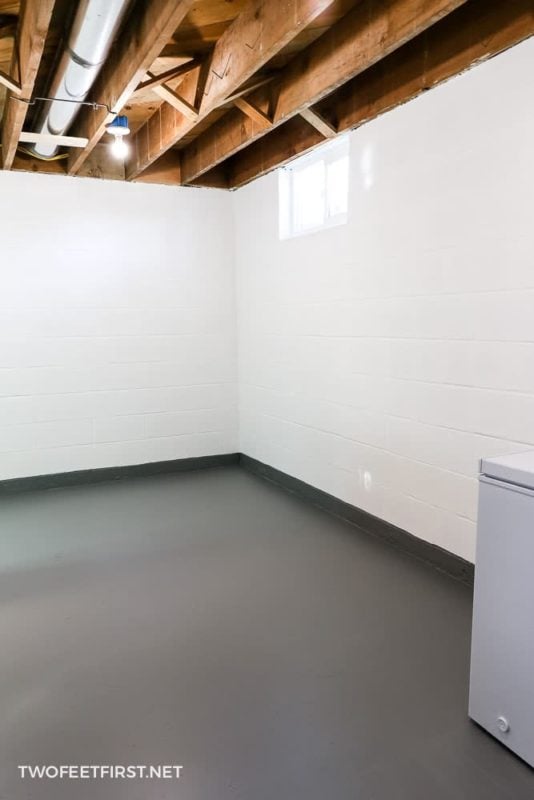
Cleaning and Prepping the Concrete Surface
Thorough cleaning and preparation of the concrete canvas is mandatory before applying any basement floor paint or coating. Proper etching and cleaning clear away contaminants and open concrete pores for maximum paint adhesion.
- Sweep and vacuum the entire floor to remove loose dust, dirt, and debris. Pay close attention to corners and along walls and edges. Even small debris can impair paint bonding.
- Use a commercial-grade degreaser to lift any oil, grease, or other hydrocarbon stains from the concrete, letting it soak for 10-15 minutes before scrubbing. Rinse thoroughly with clean water afterward.
- Etch the bare concrete with a dilute muriatic acid solution to clean and open the pores for painting. Let the acid dwell for 15-20 minutes before thoroughly rinsing. Wear protective gear while handling acid.
- For smooth or non-porous concrete, profiling the surface via grinding or shot blasting creates the right texture for the paint to mechanically adhere to. Vacuum up all dust after grinding.
- Check moisture levels, allowing the floor ample drying time after cleaning and etching. Nearly all paints and coatings require bone-dry concrete before application.
- Wipe down the cleaned floor with a tack cloth right before painting to pick up any remaining dust or debris that could interfere with optimal paint bonding.
Epoxy Floor Paint
Epoxy floor paint is commonly used in basements because it creates an exceptionally durable, chemical-resistant surface that stands up to heavy use and makes cleaning a breeze. Epoxy paints provide long-lasting protection and aesthetic appeal to basement floors.
High-performance two-part epoxies are extremely hard, adhesive, and impact-resistant while offering great chemical resistance. This makes them ideal for protecting shop or laundry room floors. Epoxy floor paint can be tinted or mixed with colored flakes to create attractive solid-colored floors or speckled aggregate finishes. Metallic pigments produce shimmering effects.
The thick, glossy epoxy film creates a moisture-proof barrier on concrete that prevents musty odors and makes the floor super easy to clean. Just sweeping and mopping is required. Epoxy paint forms a seamless, monolithic floor surface without joints or gaps where grime can collect. This makes it very hygienic for basement spaces like recreation rooms.
Mixing in textured grit particles creates non-slip footing on basement stairs, laundry rooms, and other high-traffic areas. This prevents slips and falls. Epoxy floor paint cures an inert, low-odor finish that won’t emit residual solvent smells. It lasts for many years with minimal maintenance
Water-Based Latex Floor Paint
Introduction: Water-based latex floor paints offer a lower cost, and lower odor option compared to epoxies for painting basement concrete floors. While latex paints aren’t as hard-wearing, they provide good value.
Water-based latex floor paints are quite affordable compared to epoxies and other high-performance coatings. This makes them a good choice for basement floors on a budget. Latex paints cure to a more flexible, “breathable” finish compared to epoxy. This allows moisture vapor through the coating to prevent peeling.
Low-odor latex paints are preferable for interior basement use to avoid strong residual paint smells. The water-based formula has minimal odor. Latex paint stands up fairly well to foot traffic and light wear and tear but does not have the durability and stain resistance of epoxy or polyurethane.
Multiple coats of latex floor paint build up a layer of protection that seals in the concrete and resists dirt, scuffs, and musty basement odors. Paragraph 6: While not the most heavy-duty option, latex floor paint provides an affordable, low-odor way to refresh and protect basement floors.
Anti-Slip Additives
Painting basement concrete floors with grip coatings that have anti-slip additives is advisable to prevent dangerous, slippery conditions. Adding traction makes basement floors safer for walking across.
Polyurethane floor paints with built-in slip-resistant additives provide excellent traction for high-traffic areas like stairs, laundry rooms, and hallways. Broadcasting anti-slip alumina oxide particles into the final coat of wet paint creates grippy traction on slippery concrete basement floors near entryways.
Using etching solutions or grinders to create a slightly textured concrete profile improves paint adhesion and provides more slip resistance. Epoxy paints can be mixed with anti-slip silica sand for heavily used basement floors in recreation rooms, mechanic garages, and maintenance areas.
Cleats or tape with grippy strips adhered to basement stairs provide secure footing while avoiding the need to apply traction paints. Improving the friction of painted basement floors with anti-slip additives enhances safety and prevents dangerous slips, especially when floors are wet.
Tips on Choosing Basement Floor Paint
How to paint a concrete floor in a basement TwoFeetFirst
Practical Tips for a Painted Vinyl Basement Floor
Best Basement Cement Floor Paints – Our Complete Guide
How to Paint Concrete Basement Floors Using Epoxyshield – Building
Basement Concrete Floor Painting
How to Paint Concrete Basement Floors Using Epoxyshield – Building
How To Paint a Concrete Floor – Southern Hospitality
Types of Paints and Stains for Concrete Floors
Related Posts:
- Basement Floor Sinking
- Basement Floor Insulation Methods
- Concrete Flooring Options For Basement
- Sill Gasket For Basement Floor
- Vinyl Flooring In Basement Pros And Cons
- How Thick Are Basement Floors
- Thermal Break Basement Floor
- Interlocking Rubber Floor Tiles For Basement
- Remove Water From Basement Floor
- Types Of Basement Floor Drains
